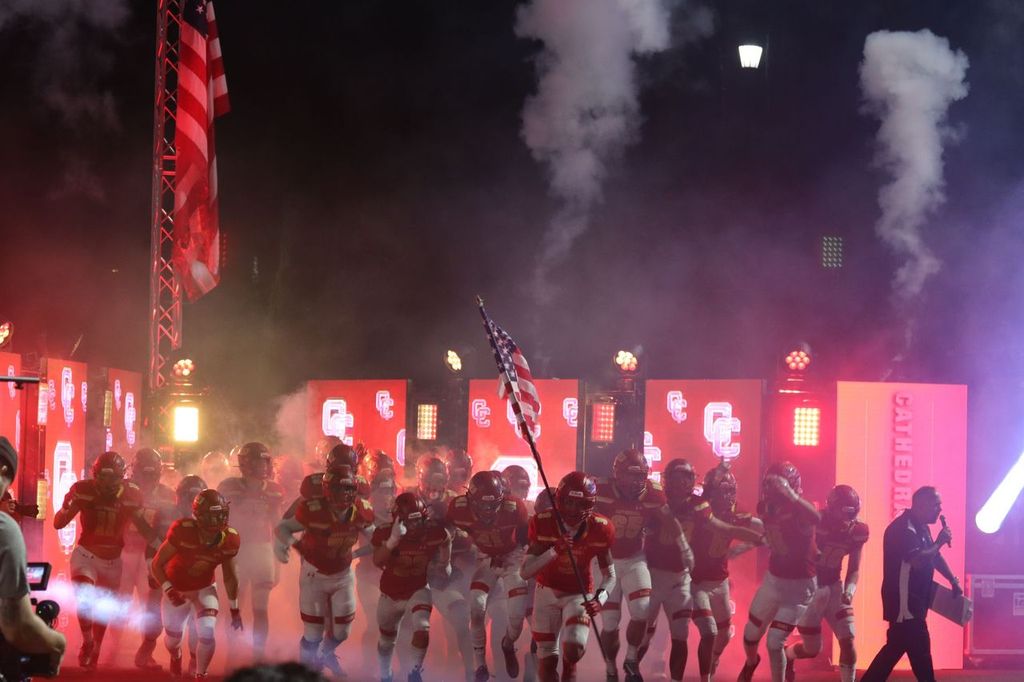With the 2025 college football season now finished, sports fans can reflect on the first year of a 12-team playoff bracket.
Ohio State became the first winner of this 12-team bracket, just a decade after they won the first 4-team bracket in 2014. However, their victory did not come easily and included multiple difficult playoff games before the finals.
The goal of a 12-team playoff was to give more opportunities to teams to have playoff runs and make sure the best teams are in the championship. Upsets were expected and occurred, but mostly due to the rankings in the bracket, and not upsets based on the strength of the teams.
When the CFP Committee announced the rankings it was highly controversial. The top five highest-ranked conference champions were given automatic bids into the playoffs. The top four had first seeds and byes.
While this sounds like it would be fair and effective, it was not. The rankings did not match the CFP top 25 rankings at all and had some of the top teams like Texas, Notre Dame, Ohio State, and Penn State being ranked lower than they should’ve. Even the NCAA acknowledged that “the seeds and the CFP rankings- differ.”
The ranking issue stemmed from the recent conference alignment in the past years. The SEC and Big Ten make up most of the top-ranked teams in college football. This means that other conferences have gotten weaker as those two have gotten better.
As a result, teams like Arizona State (who won the Big Twelve) and Boise State (who won the Mountain West) were given top 4 rankings. Meanwhile, top-ranked teams Ohio State (who won the Big Ten) and Georgia (who won the SEC) were fairly given their top seed and bye.
Regardless of the rankings, all conference champions went 0-5, questioning if the bye week they experienced affected their outcome.
The 12-team bracket was proven to be successful and celebrated even though it could use some tweaks in the seeding and selection process. Ohio State Head Coach Ryan Day said that “the new format has allowed our team to grow and build throughout the season.”
Ohio State had taken a tough loss to their rival Michigan around mid-season causing many people to doubt their playoff abilities. Day explained that having an extended playoff allowed their team to learn from their loss and make sure it wouldn’t happen again.
Senior Grady Adams explained how he was excited to see a bigger bracket this year because he loves watching competitive college football games and “seeing this amount of tough matchups is incredible.”
Yet with a longer season comes the risk of fatigue and injury in college players. Senior Carter Jackson believes it will be difficult for teams to maintain their health and avoid injuries with a long playoff season, but that “injuries come with playing at the highest level and teams need to be able to work around it.”
Religious teacher Mr. Martinez shared his opinions of the 12-team bracket, as he attended two of the playoff games this season. He explained that the bracket got “maybe not the four best teams—Oregon would have been in there for me—but we got four of the best. And we did end with the best team in college football as the champion, so in that way, it did what it needed to do.”
He was frustrated with the auto-byes and auto-bids and believed that automatically including the conference champions was an ineffective way of getting the best 12 teams in college football.
The timing of the playoffs this year was additionally different from years past. Instead of taking place within the first week of January, they took place towards the end.
This means that classes were back in session, and the traditional feel of the college playoffs during the break was lost, “making the landscape barren at that point,” said Mr. Martinez.
However, this did not stop him from traveling to the National Championship and supporting his favorite team, Notre Dame.
The introduction of the 12-team college football bracket marks a turning point in college football. This bracket creates new opportunities for teams, fairer championships, and some exciting weeks of college football.
This bracket emphasizes diversity across the nation and may continue to increase the number of teams each year for the most competitive road to the national championship.






















































